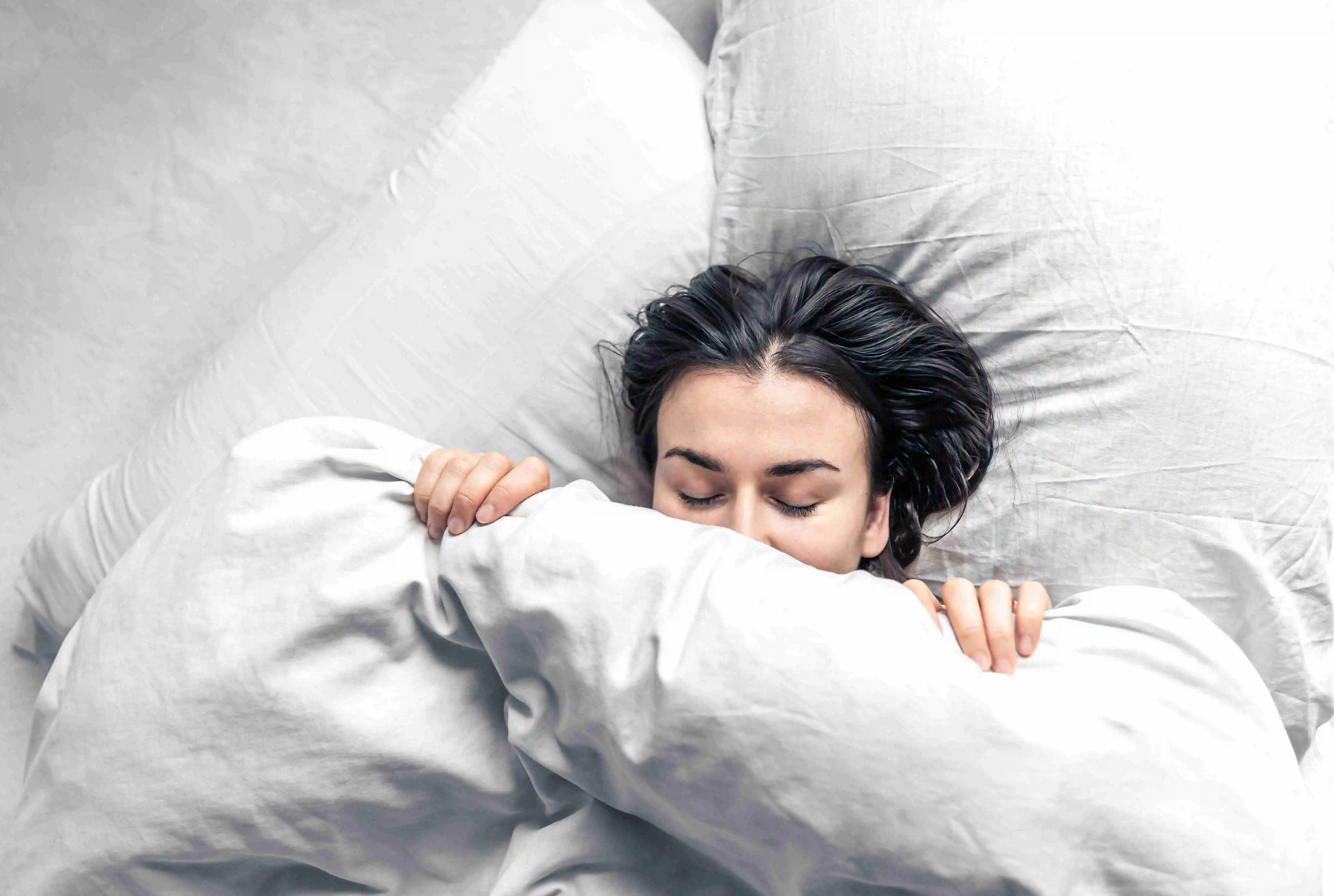Dreams reveal a fascinating aspect of the subconscious mind. Dreams have long captivated human curiosity, offering insights into our deepest thoughts, emotions, and desires.
Dreams are an integral part of the sleep cycle, particularly during the rapid eye movement (REM) stage, and are generally associated with positive impacts on sleep quality.
In this article, we will delve into the influence of dreams on sleep quality and emotional well-being, exploring both the positive and negative effects of dreams on these aspects.
What exactly are dreams?

During sleep, particularly in the REM (Rapid Eye Movement) stage, our brains become highly active. This activity results in the experiences we call dreams.
Dreams serve several functions. They may help process emotions, consolidate memories, and even solve problems. Brain regions such as the amygdala and hippocampus play crucial roles in these processes, contributing to the emotional and narrative aspects of dreams.
Why do we dream?
- Memory Consolidation: Dreaming plays a crucial role in consolidating and processing memories from the day. During the rapid eye movement (REM) stage of sleep, the brain actively processes and consolidates newly acquired information, strengthening neural connections and facilitating memory formation. This process entails the reactivation of neural pathways associated with recent experiences, which helps to reinforce memory traces in the brain.
- Emotional Processing: Dreaming allows us to process and regulate emotions, particularly those experienced during the day. The brain's emotional centers, including the amygdala, activate during REM sleep, facilitating the processing of emotional experiences. This helps individuals make sense of and cope with intense emotions, leading to emotional regulation and resilience.
- Problem-Solving and Creativity: Dreaming can stimulate creative thinking and problem-solving by allowing the mind to make new associations and explore unconventional solutions. During REM sleep, the brain exhibits heightened activity in regions associated with creativity and associative thinking, fostering the generation of novel ideas and solutions to complex problems.
- Mental Housekeeping: Dreaming helps the brain "clean up" and organize information by removing unnecessary or irrelevant data, thus maintaining cognitive efficiency. This process, known as synaptic pruning, involves the elimination of redundant synaptic connections, allowing the brain to optimize its resources and focus on relevant information.
- Cognitive Development: Dreaming contributes to the cognitive development of children and adolescents by supporting language acquisition, emotional regulation, and social skills. The imaginative and symbolic nature of children's dreams reflects their evolving cognitive abilities and emotional understanding, providing a platform for cognitive and emotional development.
- Physiological Function: During dreaming, particularly in REM sleep, physiological processes and brain activity are characterized by increased neural activation in regions involved in sensory processing, memory consolidation, and emotional regulation. Additionally, the prefrontal cortex, responsible for higher-order cognitive functions, exhibits reduced activity, leading to a state of reduced self-awareness and enhanced internal processing.
The Influence of Dreams on Sleep Quality and Emotional Well-being

Dreams and Sleep Quality
- Generally Positive Impact: During REM sleep, the most intense dreams occur, and this stage is essential for memory consolidation, emotional processing, and cognitive function. The dreaming process during REM sleep is believed to facilitate sharper thinking, better mood, and overall health, indicative of a positive impact on sleep quality. Additionally, healthy dreaming is associated with improved memory consolidation, making it easier to remember important information.
- Nightmares as Disruptors: While dreams, in general, are considered a normal and healthy part of sleep, nightmares, which involve scary, threatening, or traumatic content, can harm sleep. Nightmares can disrupt sleep, causing daytime sleepiness, worsened mood, or thinking problems during the day. Frequent nightmares may lead to insomnia and sleep deprivation, ultimately affecting overall sleep quality.
Learn More: How Do Dreams Affect Sleep?
Dreams and Emotional Well-being
Dreams play a pivotal role in emotional processing and overall mental health. They contribute to emotional regulation, helping individuals process emotions and resolve emotional conflicts.
While healthy dreaming can positively influence emotional well-being, recurring nightmares, especially in individuals with mental health disorders such as anxiety or PTSD, can exacerbate symptoms and lead to a decline in emotional well-being.
Types of Dreams and Their Effects on Sleep

- Typical Dreams: Typical dreams, which are a normal part of healthy sleep, are believed to contribute to better cognitive function, emotional health, and memory processing, thereby positively impacting sleep quality.
- Vivid Dreams: Vivid dreams, characterized by intense and lifelike experiences, may enhance memory consolidation and emotional processing, potentially influencing sleep quality positively.
- Lucid Dreams: Lucid dreams, where the dreamer is aware they are dreaming, have been associated with increased creativity and imaginative thinking, potentially contributing to improved sleep quality.
- Recurring Dreams: Recurring dreams, if distressing or unsettling, can negatively impact sleep quality, leading to disruptions and potential emotional distress.
- Nightmares: Nightmares, as mentioned earlier, can disrupt sleep and lead to insomnia and sleep deprivation, ultimately affecting sleep quality and emotional well-being.
Dreams and Processing Emotions and Memories

The connections between dreams, emotional processing, and memory processing are crucial to understanding the workings of the human brain and its impact on mental well-being.
Emotional Processing
- Revisiting Emotional Experiences: During the dream state, individuals may encounter vivid and emotionally charged scenarios that reflect their waking life experiences, providing a unique opportunity for emotional re-processing. This process allows individuals to revisit and reinterpret emotional events, potentially contributing to emotional regulation and well-being.
- Emotion Regulation: The dream state may facilitate emotion regulation by providing a safe environment for expressing, mediating, or resolving emotional responses. Dreams can offer a space for individuals to process and regulate intense emotions, potentially leading to a sense of emotional balance and resilience in waking life.
- Stress Reduction: Dreams play a role in reducing stress and anxiety. The emotional processing that occurs during dreams may contribute to stress reduction by allowing individuals to confront and process emotional challenges in a non-threatening environment.
Memory Processing
- Memory Consolidation: Dreams may aid in memory consolidation by strengthening the connections between different memory elements. During the dream state, the brain engages in the reactivation and reprocessing of recent experiences, potentially facilitating the integration of new information into existing memory networks.
- Learning Enhancement: The reprocessing of information during dreams may improve learning and problem-solving abilities. By reorganizing and reprocessing information from waking experiences, dreams have the potential to facilitate the integration of new knowledge and stimulate creative problem-solving.
- Selective Memory Retention: Dreams may selectively retain certain memories while discarding others, influencing long-term memory formation. This selective retention process could contribute to the prioritization of salient experiences and the formation of enduring memory traces, impacting the way individuals remember and interpret their past experiences.
- Creative Problem Solving: The dream state fosters creative problem-solving by allowing for the recombination of disparate elements and the generation of novel ideas. Dreams provide a platform for the exploration of unconventional connections and the generation of innovative solutions to complex problems, potentially influencing cognitive flexibility and creativity.
The Science Behind Dreaming and Sleep
The Sleep Cycle
The sleep cycle consists of two primary stages: NREM (Non-Rapid Eye Movement) sleep and REM (Rapid Eye Movement) sleep.
- NREM Sleep: NREM sleep is characterized by three stages, each with distinct characteristics. During NREM sleep, the brain transitions from wakefulness to sleep, and the body and brain experience a decrease in activity, facilitating restorative processes. The third stage of NREM sleep is particularly crucial for feeling refreshed upon waking up.
- REM Sleep: REM sleep is the stage during which dreams occur. Increased brain activity, quick eye movements, and momentary paralysis of the body muscles are its distinguishing characteristics. This stage is essential for cognitive processes and memory consolidation.
Brain Activity During Sleep
Brain activity differs significantly between NREM and REM sleep.
- NREM Sleep: In NREM sleep, the brain exhibits slower electrical oscillations, relaxed muscle tone, and reduced body functions, creating an optimal environment for rest and restoration.
- REM Sleep: REM sleep is characterized by rapid brain oscillations and vivid dreaming experiences. It is associated with neuroplasticity, memory consolidation, and emotional processing.
Neurotransmitters and Hormones
Several key neurotransmitters and hormones play vital roles in regulating sleep and dreaming.
- Acetylcholine: This neurotransmitter stimulates REM sleep and contributes to the creation of vivid dreams.
- Noradrenaline and Serotonin: These neurotransmitters influence the sleep-wake cycle and modulate dreaming experiences. Their levels fluctuate throughout the sleep stages, impacting dreams' content and emotional tone.
- Melatonin: This is a hormone that regulates the sleep-wake cycle. Melatonin plays a crucial role in promoting sleep and maintaining the circadian rhythm.
Theories of Dreaming
Various theories attempt to explain the phenomenon of dreaming from different perspectives.
- Freud's Psychoanalytic Theory: Sigmund Freud's theory emphasizes the symbolic nature of dreams as expressions of unconscious desires and conflicts.
- Activation-Synthesis Hypothesis: This theory posits that dreams are the brain's attempt to make sense of random neural activity during sleep, forming coherent narratives.
- Threat Simulation Theory: According to this theory, dreams serve an evolutionary function by simulating threatening scenarios, enabling individuals to prepare for potential dangers.
- Continual-Activation Theory: This theory proposes that dreaming is a continuous aspect of brain function, reflecting the ongoing processes of memory consolidation and emotional regulation.
Sleep Disorders Related to Dreaming

REM Sleep Behavior Disorder (RBD)
REM sleep behavior disorder (RBD) is a condition where individuals physically act out their dreams. The disorder manifests as nightmare-like dreams of chasing or attacking, resulting in physically defensive actions like violent punching, kicking, and screaming.
RBD episodes can occur from once a week to several times a night. It's important to note that RBD is not a psychiatric disorder and does not predispose individuals to be outwardly aggressive during waking hours.
RBD may be present alongside other sleep disorders, such as sleep apnea. Treatment usually involves identifying and treating other sleep problems, reviewing medications that may trigger the disorder, and considering medications and psychological approaches based on the individual's unique health history and medical issues.
Night Terrors
Night terrors are characterized by extreme terror and a temporary inability to regain full consciousness. Children often pair them with sleepwalking, and most people eventually outgrow them.
Narcolepsy
A lack of hypocretin in the brain results in narcolepsy, a neurological condition that causes excessive daytime sleepiness and sporadic, uncontrollable episodes of falling asleep during the day. Other symptoms include cataplexy, vivid hallucinations, sleep paralysis, and interrupted nighttime sleep.
Idiopathic Hypersomnia
Idiopathic hypersomnia shares symptoms of excessive daytime sleepiness with narcolepsy, but its cause remains unknown. It can also lead to decreased work or school performance, stress in personal relationships, and pose a dangerous driving hazard.
Insomnia
Insomnia is characterized by frequent difficulty falling asleep or staying asleep, leading to sleep deprivation that can impact every aspect of life, including impaired concentration and memory, diminished reaction time, low energy, and increased work errors.
Sleep Walking
Sleepwalking occurs when individuals get up from bed and walk around while still asleep, often exhibiting inappropriate behavior, talking or shouting, and, in extreme cases, acting hostile or becoming violent. It can also lead to injuries if the individual loses their balance or collides with other objects.
Tips for Enhancing Dream Quality and Sleep Experience
- Maintain a Consistent Sleep Schedule: Going to bed and waking up at the same time every day, even on weekends, helps regulate your body's internal clock and can lead to more consistent and higher-quality sleep, which can positively impact dream quality.
- Create a Relaxing Bedtime Routine: Engage in calming activities before bed, such as reading, taking a warm bath, or practicing relaxation techniques like meditation or deep breathing. A relaxing bedtime routine can help signal to your body that it's time to wind down and prepare for sleep, leading to more peaceful and restful dreams.
- Keep a Dream Journal: Keeping a dream journal by your bedside allows you to record your dreams as soon as you wake up. Over time, this can help you become more aware of your dreams, potentially improving their recall and vividness.
- Limit Screen Time Before Bed: The blue light that electronic devices like smartphones, tablets, and computers emit can disrupt the body's natural sleep-wake cycle. Limiting screen time before bed can help improve sleep quality and potentially enhance dream experiences.
- Create a Comfortable Sleep Environment: Maintain a dark, quiet, and comfortable temperature in your bedroom to ensure quality sleep. Investing in a comfortable mattress, pillows, and bedding can also contribute to a more restful sleep experience.
- Practice Mindfulness and Stress Reduction: Engaging in mindfulness practices, such as yoga or progressive muscle relaxation, can help reduce stress and promote relaxation, leading to more peaceful and pleasant dreams.
- Avoid Heavy Meals and Stimulants Before Bed: Consuming heavy meals, caffeine, or alcohol close to bedtime can disrupt sleep and potentially lead to more fragmented dreams. Opt for light, easily digestible snacks if you're hungry before bed.
FAQs
How do dreams affect sleep quality?
Dreams have a significant impact on our overall sleep quality. During the rapid eye movement (REM) stage of sleep, which is when most dreaming occurs, the brain is highly active, and this activity is essential for cognitive processing and memory consolidation. However, if dreams are particularly intense or disturbing, they can disrupt the sleep cycle, leading to fragmented or poor-quality sleep.
What are the different types of dreams?
There are several types of dreams, including ordinary dreams, lucid dreams, nightmares, and recurring dreams. Ordinary dreams, which encompass a wide range of experiences and emotions, are the most common type of dream. Lucid dreams involve dream awareness and partial control over the dream narrative. Nightmares are distressing dreams that can cause fear, anxiety, or discomfort. Recurring dreams are those that repeat over time and often carry deep personal significance.
Can dreams affect our mood and well-being?
Yes, dreams can significantly impact our mood and overall well-being. Positive and uplifting dreams can enhance mood and contribute to a sense of well-being, while nightmares or distressing dreams can lead to anxiety, fear, and a negative emotional state.
Can outside factors affect dreams?
Yes, external factors such as stress, anxiety, medications, sleep disorders, and lifestyle changes can influence the content and frequency of dreams. Stressful events, changes in daily routine, or certain medications can lead to an increase in vivid or disturbing dreams. Similarly, practicing relaxation techniques, maintaining a healthy sleep schedule, and managing stress can positively impact dream content and overall sleep quality.
What do your dreams tell you?
Dreams are a window into the subconscious mind, offering insights into our emotions, thoughts, and experiences. They can reveal hidden desires, fears, and unresolved issues that may not be apparent in waking life. Dreams often symbolize our innermost feelings and provide a platform for processing and understanding complex emotions.
What causes a dream?
We believed dreams to be a complex interplay of neurological, psychological, and physiological factors. During the rapid eye movement (REM) stage of sleep, the brain is highly active, and this is when most dreams occur.
Do dreams reveal your true feelings?
Dreams can provide glimpses into one's true feelings and emotions. They often reflect underlying concerns, desires, and anxieties that may not be readily apparent in waking life. While dreams may not always be literal representations of true feelings, they can serve as a symbolic expression of inner thoughts and emotions.
Why do we forget dreams?
The brain's natural processes often result in forgetting dreams. Short-term memory primarily stores dreams, and without reinforcement or relevance, they may fade quickly. Additionally, the transition from sleep to wakefulness involves changes in brain activity that can contribute to dream amnesia. Factors such as stress, sleep disturbances, and medication can also impact dream recall.
Why do dreams feel so real?
The brain's complex activity during sleep is responsible for the vividness and realism of dreams. During dreaming, the brain's sensory processing centers are active, creating a multisensory experience that feels real. Despite the absence of external stimuli, the brain generates sensory perceptions, emotions, and memories, resulting in a convincing dream experience.
What does dreaming tell you about your sleep?
Dreaming plays a crucial role in the sleep cycle, closely influencing both the quality and stages of sleep. Dreams primarily occur during the REM stage, which is associated with heightened brain activity and vivid dream experiences. Monitoring dream frequency, content, and emotional tone can offer insights into sleep patterns, dream vividness, trauma, dream interpretation, stress levels, and overall sleep quality.
Conclusion
Exploring the world of dreams, their meaning, and dream analysis reveals a fascinating aspect of the subconscious mind. Dreams offer insights into our deepest thoughts, emotions, and desires. Understanding the process and the science behind dreams not only sheds light on the complexities of the human mind but also highlights the impact of dreams on sleep quality.
Kelsey Butler, MS, RDN
Kelsey Butler is a Registered Dietitian Nutritionist with a Master's in Nutrition Sciences. She is an expert in nutrition research, coaching, and content development. Kelsey takes a mindful approach toward health and values building relationships with all foods. She understands the need to set personalized goals because not one size fits all, from dietary preferences to lifestyle habits.


